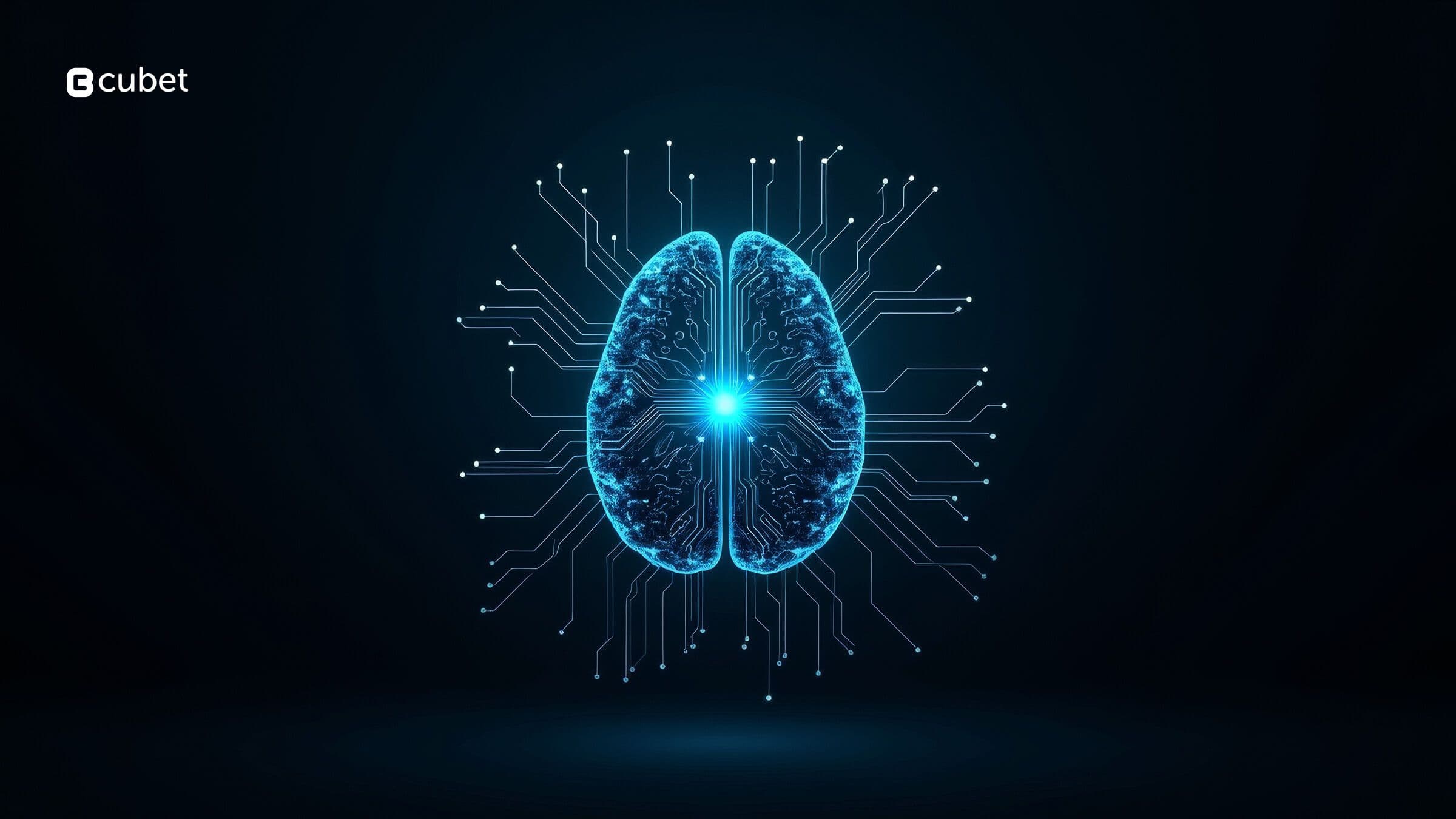From Chaos to Clarity: Reclaiming Deep Work with the Cognitive Load Assistant.

If you're an engineer, your most valuable asset is focus. It's the only way to solve complex problems, design robust systems, and write clean, maintainable code.
But that focus is under constant attack. Instead of spending your day writing, testing, and shipping code, you're hit with a relentless barrage of Slack pings, 'urgent' emails, CI/CD alerts, and meeting invites that fragments your day. This isn't just an annoyance; it's a drain on our Cognitive Load, and it's the silent killer of our productivity.
In psychology, our brain's working memory (its "RAM") is limited. It's consumed by:
Intrinsic Load: The difficulty of the task itself (e.g., "How do I fix this complex bug?").
Germane Load: The "good" effort of learning and deep problem-solving (e.g., "I'm building a new mental model!").
Extraneous Load: The "bad" effort of processing noise, context-switching, and finding information (e.g., "Which of these 50 pings actually matters?").
When "Extraneous Load" (noise) is high, we have zero capacity left for "Germane Load" (deep work). We spend our days processing, not engineering. This is where the Cognitive Load Assistant (CLA) comes in.
The Mission: An AI Shield for Your Brain
The CLA is not another dashboard or chat client. It's an AI-powered agent that acts as an intelligent filter between you and the noise. Its sole mission is to aggressively minimize extraneous load so you can focus on the work that matters.
Its goal is to answer one question for every notification: "Does this person really need to see this right now?"
Core Functions of the CLA
Intelligent Triage: Connects to workplace tools (Chat, Email, Project Management), using an AI model to classify all messages (e.g., URGENT_BLOCKER, QUESTION_NEEDS_YOU, FYI_EMAIL_THREAD).
Focus-Time Guardian: When you're in "Deep Work" mode, the CLA silences all non-critical pings. FYI messages are held; URGENT_BLOCKER alerts get through.
Automated Summarization: Delivers a 3-bullet summary of a 50-message Slack thread or a missed meeting, complete with action items.
Proactive Synthesis: Provides a single "Daily Digest" at the start or end of your day with your urgent comms, top priorities, and code reviews awaiting your attention.
A Day in the Life: The "Before" and "After"
What does this solution actually feel like?
The "Before":
8:30 AM: You log on to 50 unread emails, 20 Slack pings, and 3 GitHub notifications.
9:15 AM: You finally start coding.
9:27 AM: A Slack ping from a non-urgent channel breaks your flow. You check it, "just in case."
10:00 AM: You're pulled into an "urgent" meeting that could have been an email.
11:30 AM: While debugging, you miss a critical P0 alert from PagerDuty because it's buried in the same channel as CI/CD failures.
4:00 PM: You're exhausted from a day of context-switching, even though you only got 90 minutes of "real" coding done.
The "After" (With the CLA):
8:30 AM: You log on and open your single "CLA Daily Digest." It reads:
Urgent (2): A P0 alert (triaged and escalated) and a direct question from your manager.
Your Priorities (3): Two code reviews you're blocking and a summary of the 10-message Jira thread you were added to.
FYI (5): All 50 emails and 20 Slack pings have been summarized into 5 bullet points.
9:15 AM: You enter "Deep Work" mode. The CLA silences all non-critical notifications for the next 2 hours.
10:15 AM: A true P0 alert from PagerDuty bypasses the filter and notifies you immediately. You fix it.
4:00 PM: You feel accomplished. You had two full "deep work" blocks, handled all critical issues, and can log off with a clear mind.
How It Works: An Architectural Sketch
This is a production-grade, event-driven AI system. Security, privacy, and reliability must be paramount at every layer, with data encryption, least-privilege API scopes, and secure secret management.
Here's a high-level look at the architecture:
1. Layer 1: Ingestion & Connectors (The "Senses") This layer uses secure, independent services to connect via APIs and Webhooks to our tools (Slack, Google Workspace, GitHub, Jira, etc.). It ingests all incoming data (a new email, a Slack message, a Jira comment) and publishes it as a standardized event to a central message queue (like RabbitMQ or Kafka). This decouples the "senses" from the "brain," ensuring that if the AI core is busy or a service is temporarily down, no messages are lost.
2. Layer 2: The "Brain" (The AI Core) This is where the intelligence lives, built as a robust workflow orchestration engine. When an event is pulled from the queue, it's processed through a stateful pipeline—a perfect use case for a tool like LangGraph. This "brain" would:
Triage Node: Pass the event to a classifier. For cost and speed, this could be a model hierarchy: a fast, simple model (like a fine-tuned BERT or VADER) handles 90% of messages, while complex summarization tasks are escalated to a powerful LLM (like a GPT-4 or Claude 3 class model).
State Check Node: The graph checks the user's current status (e.g., DEEP_WORK, IN_MEETING, AVAILABLE) from the persistence layer.
Conditional Logic: Based on the message's urgency and the user's state, the graph routes the event. FYI messages during DEEP_WORK are routed to the "Daily Digest" buffer. URGENT_BLOCKER messages are routed for immediate notification.
Action Node: The graph takes action: pushing a notification, saving the item for the digest, or (in the future) even auto-replying.
3. Layer 3: Persistence & State (The "Memory") A secure, high-availability database (like PostgreSQL or a NoSQL DB) is crucial. This layer stores user preferences (e.g., "Deep Work" hours, notification rules), the user's current state, and the buffered items for the "Daily Digest."
4. Layer 4: The "Controls" (Backend & Interface) A secure backend API (like one built in FastAPI) serves two purposes:
It provides a lightweight web interface where the user controls their preferences, sets their status, and views their "Daily Digest."
It handles pushing real-time, filtered notifications to the user's client (web, desktop app, or mobile) via WebSockets.
What This Isn't
To build trust, it's just as important to define what the CLA is not:
It's not another inbox: Its job is to reduce the number of places you check, not add one more.
It's not a PagerDuty replacement: It respects and integrates with critical alert systems. We would hard-code rules for PagerDuty or OpsGenie to always bypass the filter.
It's not a "boss-in-a-box": This is a personal tool, not a management surveillance tool. It must be 100% opt-in, enforce zero-trust architecture, and practice data minimization (e.g., only store summaries or metadata, not raw message logs) to be transparent and protect user privacy.
Key Risks and How to Mitigate Them
Risk: The AI Fails (e.g., misclassifies a P0 bug as FYI).
Mitigation: We need a clear Human-in-the-Loop (HITL) feedback mechanism (a simple "Was this right?" button) to continuously fine-tune the model. As mentioned, critical sources like PagerDuty are hard-coded to always get through.
Risk: The Security & Privacy ("Creepiness") Factor.
Mitigation: This is the biggest hurdle. The tool must be 100% opt-in. We must be radically transparent with users about what data is being processed and why, and enforce data minimization at every step. Trust is the primary feature.
How We Measure Success
Success isn't "more clicks" or "engagement." Success is measured by what we give back to the engineer:
Focus Time Gained: A measurable increase in uninterrupted "deep work" blocks on calendars.
Qualitative Feedback: A reduction in self-reported context-switching.
Developer Wellness: Improved scores on developer wellness surveys, specifically a reduction in feeling "overwhelmed" or "reactive."
The next frontier isn't a new framework; it's a new standard of focus. As engineers, we'd never let a production system run this hot. We'd never tolerate a constant DDOS attack on our most critical resource. We'd never accept a design that creates this much signal loss. Yet, we let our own workday run this way—a v0.1 system that's failing under its own extraneous load.
We are the people who design, build, and fix the systems that run the modern world. We build AI to optimize supply chains and platforms that scale to millions. It is time we turned those skills inward.
This is the ultimate 'dogfooding' project. It's time to treat our collective burnout as the P0 bug it is, and be our own first, most important customer. Let's build the Cognitive Load Assistant—not just as a tool, but as a declaration that our focus is the real engine of innovation, and we will be the ones to protect it.
